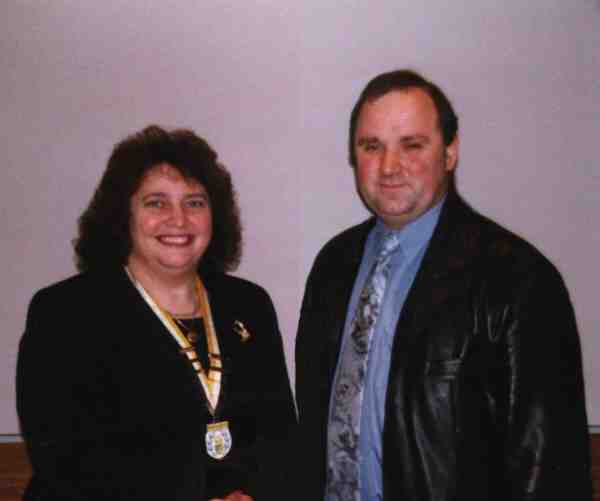
 Spangles Past
and Present
Spangles Past
and Present
We were first attracted to this new mutation when we saw the late Harry Bryan’s Spangle Yellowface Blue cock and hen. Our first Spangle was acquired in 1985 from the late Alf Ormerod, a Spangle Opaline Light Green Hen. Over two breeding seasons this hen produced 39 offspring, 20 Spangles and 19 non-Spangles. You could not have asked for a better start in this new mutation. Over the next 12 years from this one Spangle hen 496 offspring were produced from 96 pairs of which 268 were Spangles and 228 normals. During this time we did not use another Spangle outcross.
In the early years we tried many experimental pairings to try to find out more about this interesting variety. We paired Normal x Spangle, Spangle x Spangle, Double Factor Spangle x Spangle and Double Factor x Double Factor.
A problem we came across was the Spangle was rapidly taking over our stud. Every other pair contained a Spangle. We had paired all our best birds to Spangles, and produced some very good quality Spangles with good variety markings that did a lot of winning on the show bench for a couple of years.
Within 5 years we noticed a drop in quality across the stud. We had kept our lines true by breeding in families, using cousin x cousin or uncle to niece and similar related pairings. We did not bring any outcrosses in, the only Spangle outcross we had was the original Spangle from Alf. We decided to cut back on the number of Spangles we used, and to concentrate on rebuilding our ‘normal’ varieties to get our stud back to its original quality as it was five years previously.
Once you let the quality of your stud drop off it can be very hard to be rediscovered. It was very hard work, but we managed to do it, and once again enjoyed success on the show bench.
Breeding from the much reduced stock of Spangles we now had, went very well for a few years but then all of a sudden, we were pairing Spangles x Normals, up to 8 or 9 pairs were used, and we only produced 2 or 3 Spangles from all these pairs. What was going wrong? We spoke with other fanciers, who said they were also having similar problems.
We mentioned this when we visited Jeff Attwood, and he suggested introducing some new Spangles into our Spangle family, and pairing them together to produce Double Factors Spangles. We had gone away from using Double Factors as our own Spangles when paired together were producing inferior Double Factor Spangles. Taking Jeff’s advice we brought some new Spangles into our Stud and paired them to our own Spangles. It worked straight away and we were once again breeding Spangles.
One major problem for the Spangle is that for some unknown reason a Spangle’s markings change. Generally the Spangled markings become lighter as the bird gets older. Sometimes an odd dark feather may appear. We have found that by pairing Grey Greens or Greys to Spangles helps to ‘fix’ the Spangled markings throughout the birds life. We have had the same success by using Yellowfaces to the blue series Spangles. We also believe that the Double Factor Spangle produces some of the best-marked Spangles.
Spangle Light Greens and Skyblues have a tendency not to exhibit good ‘bulls-eye’ spots i.e. no spots at all, or very lightly Marked ( ) ‘bracket type’ spots. Generally we find that Spangle Opalines carry the ‘bulls-eye’ spots, but these change to solid spots later on in the birds life.
There has been a lot of criticism of some of the Spangles on the show bench today – poor Spangled markings, lack of spots etc. Is this justified? Yes and No.
When we look back at the original Spangles on the show bench, some 20+ years ago, it is fair to say that we had the same faults then as we have now. And looking back at early photographs this can be confirmed.
It is not only the Spangles that have faults on the show bench, it is seen in every variety or colour. It is a fact that regardless of variety or colour the quality of bird comes first. The Budgerigar Society issue a Colour Standards book to all members which gives the standards of perfection, scale of points, colour standards, pictorial ideals and guidelines which when read in conjunction with each other serve as a guide to both the judge and exhibitor.
Today the Spangle variety is very popular, just look at the numbers of Spangles on the show bench.
The Spangle variety has reached the pinnacle within the Budgerigar fancy, let’s all hope that it will remain there for a very long time.
Spangle Review
Issue No. 25 ~ Spring 2000